South Ken Green Trail
London has received some rather unwanted press over the summer for one of the largest and most expensive ‘green’ interventions it’s ever produced. The Marble Arch Mound promised much in terms of luscious greenery, established plants and stunning views of the city but has rather sadly ended up looking like a peculiarly angular piece of green papier-mâché made from the type of fading turf that you find in stacks outside of budget DIY stores. It’s been met with much derision, not least because of the initial admission fee expected of prospective visitors – a bit of liberty when it was specifically installed to entice people into the city centre in order to spend money in shops once again.
But the desire to create more greenery in an urban setting is still one that can prompt joy and with it, induce a little hope – something we are all in desperate need of in such tumultuous times. The pandemic has shown that getting outdoors and being in natural or at least undeniably ‘green’ environments (including those constructed by humans) has a positive impact upon our health and wellbeing. Another initiative, The South Ken Green Trail, recognises this and offers a series of ‘green’ installations across South Kensington, London’s arts and science district. The boost to these pandemic-hit sectors is timely in itself, but the recognition of integrating nature in the built environment is the driving force behind the outdoor event. A beautifully illustrated map leads visitors from Exhibition Road to the Serpentine gallery, taking in the Museum Lane Pollinator Meadow, Natalie Taylor’s wildflower planting that reads ‘REWILD’ at the Prince’s Garden and an interactive sculpture inspired by the movement of dandelions at the Serpentine.
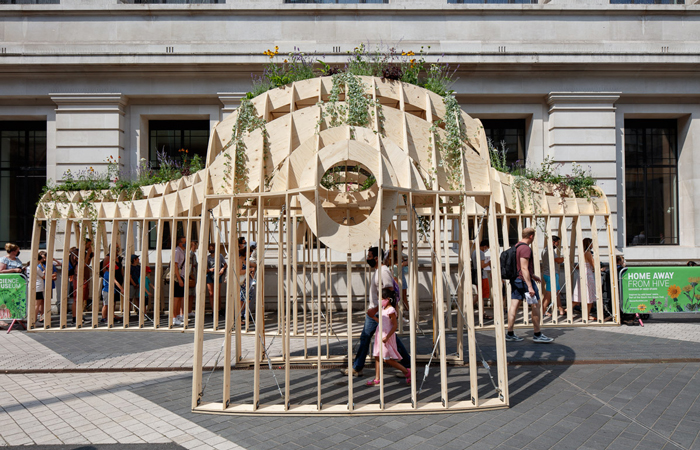
Home Away from Hive © Luke O_Donovan
But dotted along the route are 3 special new commissions that explore the significance of biodiversity and sustainability whilst “epitomising the area’s role in promoting debate and driving progress to address society’s most pressing challenges.” Each designer was selected as part of a competition organised by The London Festival of Architecture and Discover South Kensington, which involved a pairing with one of three cultural partner institutions – the V&A, Science Museum and Goethe-Institut.
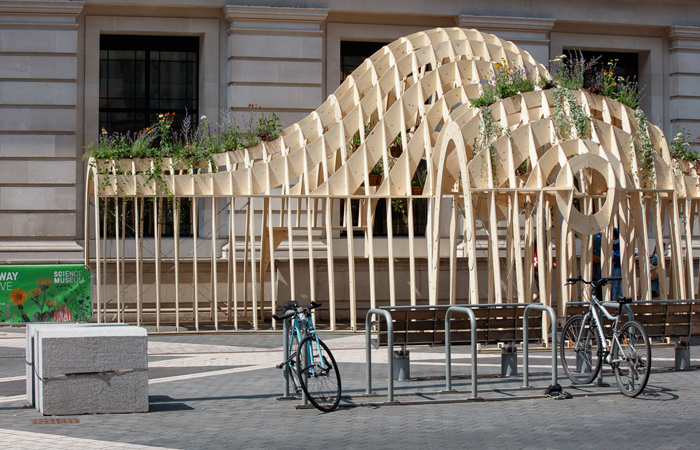
Home Away from Hive © Luke O_Donovan
Promoting planting for pollinators is a central feature of the entire trail; something that Home away from Hive by Mizzi Studio is a champion of. Located outside the Science Museum, the installation consists of a large intersecting lattice of timber that forms a hive-like form, into which is an array of medicinal and pollinating plants. As John Tweddle, Head of the Angela Marmont Centre for Biodiversity at the Natural History Museum points out:
“Insect pollinators, such as bees, hoverflies, butterflies, and moths might be small, but they’re mighty and integral to both our health and that of the natural world that we rely on. Not only do they pollinate many of the food plants that are central to our nutrition, they play essential roles in pollinating many of the UK’s wildflower and tree species, which in turn provide vital habitats and food for other wildlife.
Yet, collectively, the UK’s insect pollinators are in real trouble, with the loss and fragmentation of suitable habitat, climate change, and pesticide use putting many species under threat. We can all take positive steps to support pollinator numbers in the UK today.”
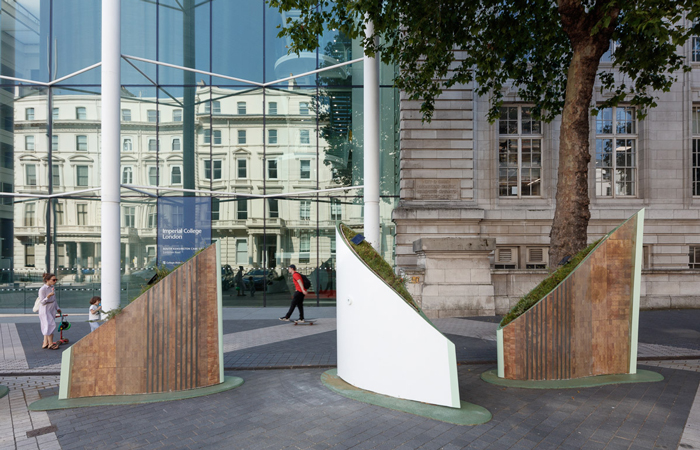
Windflower © Luke O_Donovan
Home away from Hive is a beautiful form, with undulating curves and organic shapes that evoke nature, but it also provides essential light and air flow for the bee and bug-loving plants tucked within the structure. Where natural forms have been used to inform this piece, Urban Radicals installation Windflower uses human-made structures as a starting point. As the title alludes to, the work is actually formed from a modified wind turbine blade, the cut sections providing an ideal tub-like form, not unlike that of a regular planter. It’s a timely use of non-recyclable material, a rather unfortunate scenario that Europe and the US are faced with as the sustainable energy providing objects, which are built to be almost indestructible, reach the end of their shelf life and create a massive waste conundrum. Whilst we only ever tend to see wind turbines from a remote distance in fields or at sea, these urban-dwellers offer the dual purpose of raising awareness about waste management whilst creating opportunities for plants and pollinators (as well as reminding us of the need for even better sustainable practices when it comes to creating energy.)
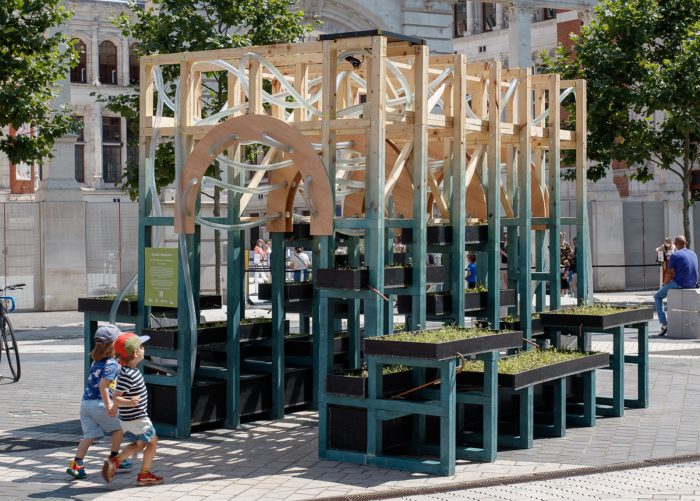
Algae Meadow © Luke O_Donovan
The Algae Meadow by Seyi Adelekun connects the architecture of Exhibition Road to the hidden depths of the Serpentine Lake down the road in Hyde Park through the use of a hydroponic algae canopy and vertical wildflower meadow. Whilst hydroponic systems may not yet be as mainstream as they are in the Netherlands, the growing of plants, notably crops, without the need for soil is becoming steadily more prevalent here in the UK.
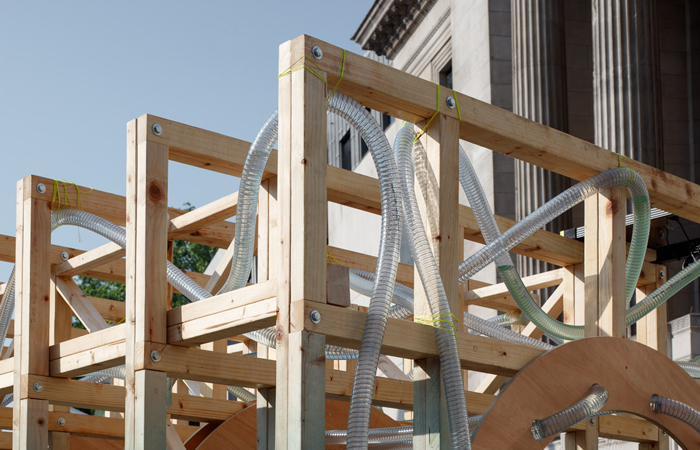
Algae Meadow © Luke O_Donovan
The Algae Meadow has also looked to bring in the wider community having been constructed from locally and responsibly sourced materials by a team of volunteers including women from the Black Females in Architecture network. The final form, which has tubes that coil around a partially dyed timber frame that house the soilless planters wouldn’t look out of place on the set of the film The Martian; which is fitting for a piece of work, and indeed entire event, that has set its sights on increasing awareness and improving the availability of natural habitats for wildlife and us as a species. The 2 are entirely intertwined after all.




